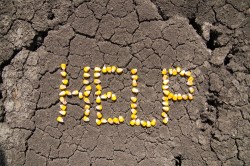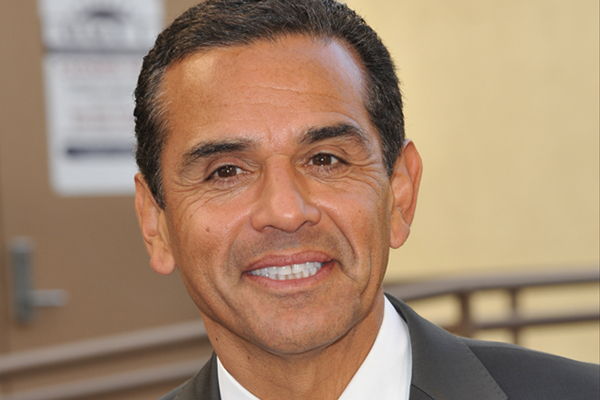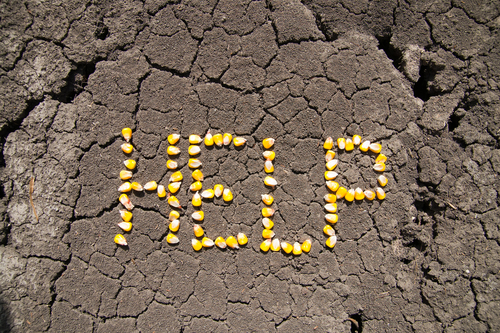
Photo by Shutterstock.
In January 2012, the U.S. Department of Agriculture (USDA) approved the first genetically engineered drought-tolerant corn — despite minimal evidence of its actual drought tolerance. Since then, there’s been a steady stream of analysis suggesting that genetically engineering for this trait won’t give farmers much bang for their buck.
Engineering a plant for drought tolerance, which represents the interaction of many genes, isn’t like doing the same for traits like herbicide tolerance or pesticide expression, which hinge on a single gene. And even if successful, there’s no guarantee that the engineered plant will do as well in normal conditions as it does in drought.
When Wired Science blogger Brandon Keim looked at the potential for drought tolerance in corn, he concluded that the complexity:
… makes non-genetic approaches, such as using cover crops to manage soil characteristics and fine-tuning planting times, all the more important. But those methods are knowledge-based, and it’s much harder to monetize knowledge than genes.
As Tom Philpott at Mother Jones explained at length, those “non-genetic approaches,” i.e. many of the practices inherent in organic agriculture, are proven to increase drought tolerance of the soil — which in turn increases the yield of the crops grown in that soil.
But none of that eliminates the possibility that genetically engineered drought-tolerant seeds might show some benefit in some situations. And a recent report in MIT’s Technology Review indicates that at least one farmer enjoyed a decent yield from this kind of GMO corn during the current Midwestern drought:
Illinois farmer Mike Cyrulik didn’t foresee this year’s drought when, this spring, he planted 20 bags of a new corn seed on a slice of his 5,000-acre farm. Today, weeks before the harvest, much of his and his neighbors’ crop is dead or dying. But not the portion of his land where he planted the new seed. The healthy looking plants have “wound up being the talk of the town,” says Cyrulik, who expects a significantly higher yield, by 30 to 50 bushels, from each of those 220 acres in Bloomington.
Of course, the article doesn’t mention what his overall yield looked like, so it’s hard to know what kind of percentage increase the drought tolerant-seed — a product of Syngenta, not Monsanto, for the record — actually enjoyed. The USDA’s latest estimates put average yield at about 123 bushels per acre — down from the expected 147 bushels per acre before the drought began. If Cyrulik is in that ballpark, then the boost from GMO corn represents a healthy increase in productivity by any measure.
But that’s where things get tricky to evaluate. Firstly, Cyrulik farms in Bloomington, Ill., which, according to the USDA-sponsored U.S. Drought Monitor, escaped the worst of the drought’s effects. It appears to be in an area of “moderate” rather than “severe” drought — the former being the type of drought these seeds are engineered to survive.
Another variable is that the biotech companies instruct farmers who use their drought-tolerant seeds to use what Monsanto executive Mark Edge described to Technology Review as “prescribed farming practices.” Edge observed that those who did “are seeing good results so far.”
The question is, how much of the benefit comes from these “prescribed farming practices” — which presumably make the soil more resilient — and how much from the seed itself? And even so, Edge admitted that the benefit is “in the range of single-digit percentage yield improvements.” Cyrulik for the moment appears to be an outlier.
So where does this leave things? When Technology Review asked Cyrulik whether the GMO seeds are “the answer,” he said, “I don’t know. I’m not ready to bet the farm on it.”
And therein lies the problem. The appeal of these biotech seeds is that they’ll save farmers the “trouble” of planning for drought. And when I say “trouble,” I mean that they won’t have to farm more in concert with the natural world, even as the climate changes drastically.
Monsanto and Syngenta want farmers to think of these seeds as an insurance policy against drought — but they come with a hefty premium. After all, the success of the seed depends on how bad the drought is, when in the growing season drought occurs, and how the seed performs under normal conditions, among other factors. The resulting decisions strike me more like gambling than insurance.
The irony is that farmers who grow food organically already protect themselves against moderate drought to a large extent without having to pay a biotech company for the privilege. The question is how best to develop and propagate those ideas out to mainstream agriculture. With biotech investing heavily in genetically engineered solutions — Syngenta, Monsanto, and DuPont are all pursuing such products — it’s up to government to fill the research gap. Sadly, the USDA has shown little interest in fact-checking biotech interests. Needless to say, I agree with Doug Gurian-Sherman, senior scientist at the Union of Concerned Scientists, in his comment to Wired:
We need to invest public research into those things that companies are not doing as much, such as agroecology and breeding other crops that are promising but neglected … The efficiency of these methods could be greatly improved, and they need to be. But the result is going to be methods farmers can use, not products.
Of course, broad adoption of those techniques risks cutting out the middleman, and powerful a middleman at that. Might it still happen? Well, let’s just say, as with those drought-tolerant seeds, I wouldn’t bet the farm on it.



